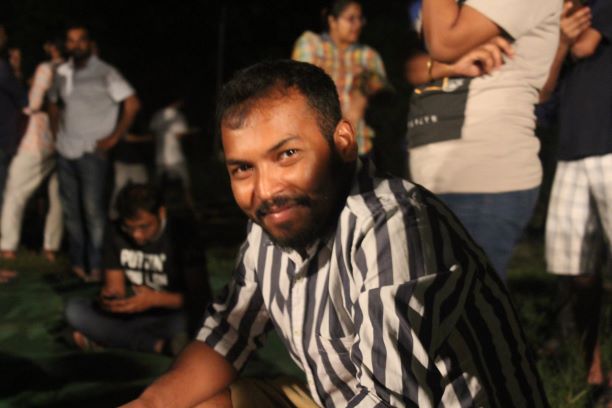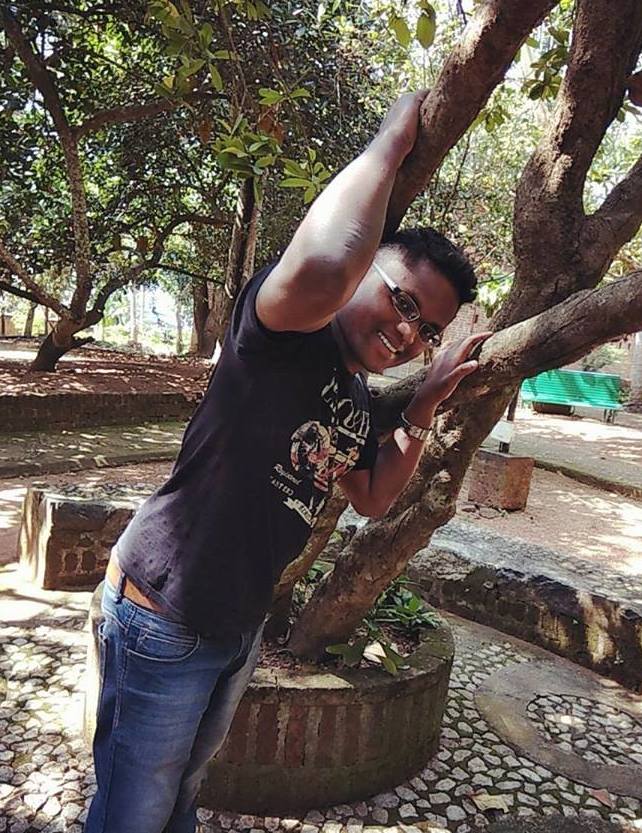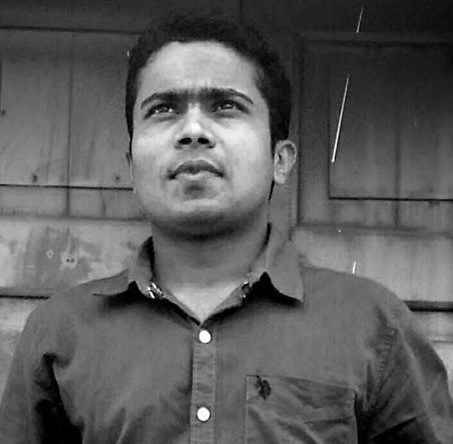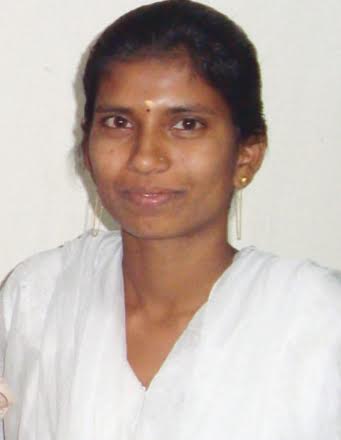Omprakash Mahato
 If voters have voted the way they have voted, we cannot but agree with Mill’s view that India is unfit for democracy. Prior to the exit poll report, no one in the ruling party including Modi and Amit Shah himself would have been sure of such an easy victory. The common narration that prevailed among others and the ABVP (students organisation of RSS) was that the NDA would definitely form the government but it would not be an easy win for the party. They estimated that NDA would reach up to 240 plus-minus 30. But NDA’s easy victory and clean-sweep in the north Indian states have surprised not only the opposition parties but also many amongst the BJP cadres. However, it has created a larger concern for Congress and others who hold the view that India is an example of a successful democracy.
If voters have voted the way they have voted, we cannot but agree with Mill’s view that India is unfit for democracy. Prior to the exit poll report, no one in the ruling party including Modi and Amit Shah himself would have been sure of such an easy victory. The common narration that prevailed among others and the ABVP (students organisation of RSS) was that the NDA would definitely form the government but it would not be an easy win for the party. They estimated that NDA would reach up to 240 plus-minus 30. But NDA’s easy victory and clean-sweep in the north Indian states have surprised not only the opposition parties but also many amongst the BJP cadres. However, it has created a larger concern for Congress and others who hold the view that India is an example of a successful democracy.
With a quick flashback of the 2014 election, we can draw a picture where the BJP coming to power was because of the magical populist narrative that Modi provided to the nation. The mandate to BJP was also due to the anti-incumbency government against the Congress, which was of course beautifully sold by media and supported by Anna Hazare’s movement against corruption.
But one interesting point to note here is that despite all the charges against Congress in 2014, under the leadership of Dr. Manmohan Singh, the Indian economy was doing better. It was one of the fastest growing economies among the developing nations. If we systematically analyse the victory of NDA in 2019 Lok Sabha election, it is of utmost importance to examine the way voters have voted, and why they have voted the way they have voted. Was the voting in favour of BJP on religious lines? What role has liberal left played in BJP’s victory? Is it the case that the opposition failed to work on caste calculations the way BJP did? Or was it even a failure of leadership or rather a lack of leadership as highlighted by the media for almost a week prior to the election? Was the failure of opposition and especially the failure of social justice forces to counter BJP because of lack of clarity in it their vision or did they fail to circulate their vision among the masses? Or is it the failure of democracy itself? To take a note on these pertinent questions, it is firstly important to re-read the success of BJP in gaining 303 seats in the parliamentary election.
How did BJP win?
Firstly, State in India is a Hindu majoritarian state with almost 80% of the population are Hindus, 14.3% Muslims, 2.3% Christians, 1.7% Sikhs, and almost 2% others. However, there is a fraction among the Hindus, within the caste Hindus, the OBC’s and Dalits. The Congress adopted a liberal approach after the independence to galvanise vote on the idea of ‘Hinduism’ that was provided by the influential leaders like Gandhi, Nehru, and Tilak. The Congress was supported by left liberals in both the center and the state election, in all the crisis of governance. The liberals in India were all for reforming ills within the Hindu religion and not for eradicating religion from the public domain. It has been alleged that Constituent Assembly was not representative of Indians. Winston Churchill called it ‘assembly of Brahmins’ and the constitution was called a congress constitution. After being the first Prime Minister of independent India, Nehru chose to work on the western principle of modernisation, where he advocated for secularism. But the congress system went ahead with the manifold of ‘Hinduism’ and Gandhi’s notion of mutual co-existence of all the religion. Unlike the west, the notion of religion in India was not in terms of a clear separation between state and religion. Religion and politics mutually went ahead supporting each other for the vote bank politics.
But with the rise of the socialist movement, there was the emergence of backward class politics. In the North Indian states, Congress was reduced to a minority as rightly pointed by Jafferlot in ‘India’s Silent Revolution’. After the J.P Narayan movement and Mandal agitation, the identity politics became strong all along with the states to which Yogendra Yadav calls it as a second democratic upsurge. It was Pan-India phenomena.
Interestingly BJP backed by RSS had a clear cut ‘Hindutva’ ideology since its formation in 1925. It didn’t have a soft Hinduism strategy as adopted by Congress. The BJP worked on their strength of ‘Hindutva’ to attract the Hindu voters. RSS played an important role in proliferating and nurturing ‘Hindutva’ discourse in the entire state. This was done with the help of establishment of education institutions called ‘sishu mandir’, vidya bharti and many others in the areas where other political parties failed to reach. In the naxal dominated places, where left cadres perpetuated violence in the villages, RSS went ahead with their future plan, initially by providing education in that region. The long year of the struggle of RSS in proliferating ‘Hindutva’ has brought them rich dividends in the last two Lok Sabha election.
Secondly, the binary between Congress and BJP played an important role in the victory of BJP. Within the past two Lok Sabha election, the presumption created was that there are only two national parties, so one needs either to support for BJP or Congress. There was little scope for the third parties to get the recognition that they were equal competitors. Since the failure of Congress party to revive the image of ‘Rahul Gandhi’ who has been consistently attacked and referred as ‘Pappu’ by Narendra Modi and the Media channels, it became an easy fight for the BJP, as there were limited contenders.
Thirdly, there has also been a failure of the social-justice parties to create and sell out the visions that they had to offer to the nation. Although coming together of SP-BSP in U.P was seen as a tough fight for BJP, it didn’t happen so. Last 30 years of governance of SP, BSP in U.P and RJD and JDU in Bihar, the backward class leaders have not able to proliferate their vision of social justice, that they had to offer to the country. It has been a failure of the social justice leaders like Mulayam Singh, Mayawati, Lalu Yadav, Nitish Kumar, Ramvilas Paswan that they have failed to provide a concrete material as to why voters needed to vote them. All they have done is governed the state on the legacies on Manavar Kanshi Ram, Rammanohar Lohia, J.P Narayan, which at present have become stagnant.
Fourthly, the signal that was portrayed by SP-BSP, not including Congress in U.P was not enough to tackle BJP. Although these social justice parties wanted to oust BJP from power, the voters were not so sure how they make the third front without the support of Congress.
Fifthly, the BJP has made a good caste calculation along with organising Hindu votes. The challenge to BJP is not from Congress or from the parties doing left politics. The fear of ‘hindutva’ politics is only from caste politics. Religion and caste politics operate in contradiction to each other. The stronger the caste politics, the weaker politics based on religion and so the vice-versa. These were evident during the 1990s, when there was wide politicisation on religious line carried by L.K Advani with the ‘Rath-Yatra’, on the name of Ram Janma Bhoomi. It was only the caste leaders like Lalu Yadav and Mulayam Singh tackled and not let religious violence occur in their region.
Now once we examine the seat distribution of BJP-JDU in Bihar and BJP in U.P, there is a clear appeal to the lower caste leaders and thereby appropriation of lower caste votes. These were carried by the creation of binary between EBC and OBC and Jhatvas vs non-Jatvas voters there by churning a large number of voters in their favour that were once loyal to the SP-BSP and RJD.
Sixthly, the failure of democratic values. The government that has attacked more public institutions that protect democracy had been re-elected to power. In recent time the institutions that function as a pillar in the functioning of democracy has been under continuous attack. Right from the educational institutions, bureaucracy, judiciary, media and the election commission of India has been used by the ruling government in favour of the party interest. In addition to these, BJP provided majority of seats to those candidates, who hold severe criminal charges. Many among them have been accused of hate mongering and delivering public speeches against Muslims in India.
Lastly, but one among the important factor was ambiguity within the left liberals in their way of approach. In the fight between the liberals and conservative, the left liberals were found to be scattered and subsumed by narratives of conservatives. In the fight of ideas between socialism vs capitalism, secularism vs communalism, nationalism vs anti-national, the liberals were seen occupied defending themselves. Instead of providing an alternative to the ‘Hindutva’ politics, they were more occupied in making the claim that they are equally Hindus and no less nationalist than the other.
The socialist discourses on health, employment and education were not adequately brought or even found missing in the political articulation done by the liberals. Instead, they played on terms and conditions set by the conservatives. Therefore, the attack on reservation, through a 13point roaster system didn’t become an issue for the left liberals. There has always been impunity on the side of left liberals on the concerns related to caste. However, the liberals and the conservatives have a mutual understanding on the grounds that privileges caste dominance and therefore a complete silence on the question of 10% EWS reservation to the upper caste. Even the voting percentage shows that there has been a transfer of vote by CPIM to the BJP in West Bengal to maintain their respective privileges.
Where did the opposition fail?
Firstly, even if the fear of ‘Hindutva’ politics was visible, the Congress party, supported by liberal intellectuals didn’t take head on to the BJP. The height of negligence was that the liberals went on to say that BJP should not take hard lines of ‘Hindutva’ and should reform their strategy. The Congress looked easily giving up the fight. Congress leaders went on to justify their love for Hindutva instead of bringing the discourse of secular politics. Moreover, Pranab Mukherjee sharing RSS stage proved little that Congress had to offer.
Secondly, the issues to trap the ruling government were many but none of them were utilised by the opposition parties. There was wide farmers distress in the states of Madhya Pradesh, Tamil Nadu and U.P. Demonetisation proved to be a decision taken in hurry with little thinking behind its implementation, which later on proved to be a failure. The middle class and the petty-bourgeoisie class was upset because of the implementation of GST. There were Rafael Scam and Vyapam scams during the BJP government. Parties manufacture issues even if there no issues to go for election. But even after having dozens of issues to counter BJP, it seemed that Congress took the strategy of wait and watch until the voter’s rule-out themselves to the BJP government.
Thirdly, democracy failed with the failure of public institutions. Communal sentiments were always present in India. But the state with the help of institutions such as bureaucracy, judiciary, educational institutions, if not suppressed, didn’t protect and proliferate communal hatred. But with the state overpowering and minimising free functioning of these institutions, these institutions seemed helpless. With BJP ruling the state, the communal veil was removed and peopled nakedly displayed their communal hatred towards minority religion.
Fourthly, the role of leaders like Ladu Yadav, who seemed to hurdle in the victory for BJP, was minimised by putting him in jail. The threat to communal politics was never from the liberals. The bigger threat was neither the left nor the Congress. It was only the identity politics based on caste that challenged communal politics. This was visible in the 1990s when entire India was polarised on communal lines, it was Lalu Yadav who detained L.K Advani respectfully, sent him back and stopped the Rath-Yatra. Thus stopping probable communal riots in Bihar. In the absence of leaders like him, the caste based politics looked bone-less.
Lastly, the failure of the opposition to tackle ‘Hindutva’ propaganda done by the media on the name of nationalism. Mainstream media along with social media engineering was the biggest asset for BJP that captured Hindu voters on the name of nationalism. Instead of putting their own political agenda, the opposition seemed to be proving themselves that they were no less nationalist than the BJP. Opposition parties have failed to learn from history that in past the debate on nationalism and religion has not worked in their favour, instead, it has always troubled them and the right wing forces have always benefitted out of it. Thereby instead of creating their own trap, they became prey to the BJP.
What can be the possible solution ahead?
I won’t take the line of Yogendra Yadav that Congress must die on its own even though I don’t oppose his views. It is high time that congress needs to realise that their leadership is not working in favour of the party. Moreover, leaders like Pranab Mukherjee and Sashi Tharoor is competing with BJP on the religion, which has not worked for them in the past. In the hunt of hindu votes, the minority votes that were earlier part of the Congress has slipped away from their hand. Therefore, a complete restructuring of the Congress party along with new strategy is all it requires for the survival of Congress.
For the regional caste-based political parties, the challenges are even bigger. It is true that caste-based parties have been so far able to counter communal politics. But lack of power sharing within different caste groups, it can do severe damage to the social justice parties. This is what explains the current failure of RJD in Bihar and SP-BSP in U.P. To do social justice politics, political parties should not only approach to the leaders of lower communities during the time of the election, but rather they should remain in touch throughout the year. Village wise representation along with respectable seat sharing during the election has to be provided to all the lower caste communities that have been denied so far.
Regional parties such as SP-BSP-RJD have to work on putting out their narrative in the public domain. Although the vision of these parties is sound, which is to bring social democracy, the reach of their narratives does not go to the large section of voters. To expand their vision to the larger masses, these parties should immediately work on building their cadres, the way RSS has done it.
And more importantly, democracy demands mutual co-existence of diversity. And the prior condition to strengthen democracy is to strengthen institutions that work for the functioning of democracy. If the political parties have failed to preserve the autonomy of institutions, it is the duty of citizens of the country to come forward and preserve it. When political parties fail to do their duty, it is the high time that the citizens of the country realise that they are no safer in the hands of political parties. Therefore, it is sooner they understand that they should come out on the street, to the parliament and put their dissent in the form of protest, silent march, poetry, literature, music, drama and all the democratic medium provided by the constitution.
~~~
Omprakash Mahato is a BAPSA activist and PhD scholar in Center for Political Studies (CPS), JNU.










